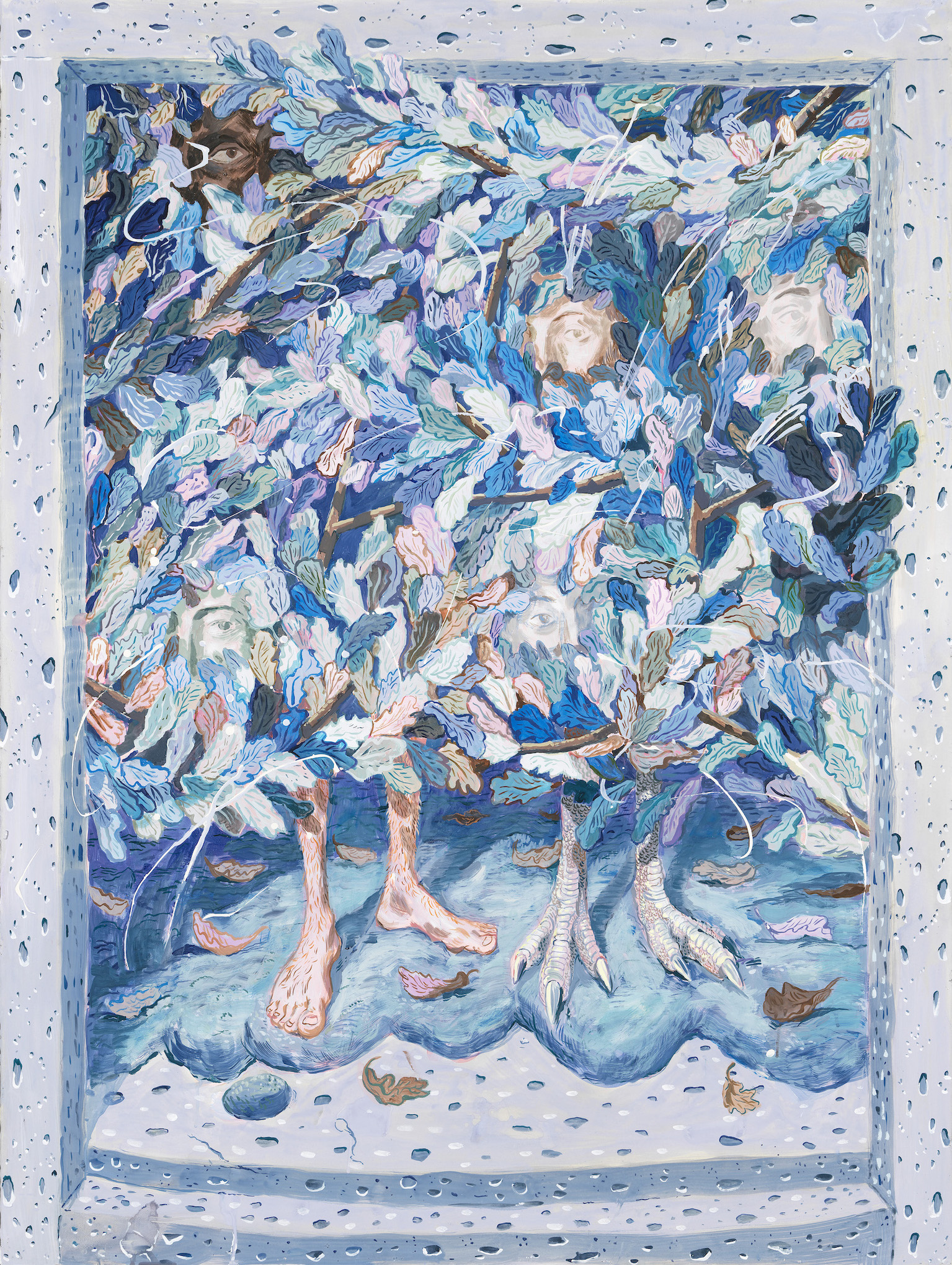Bo Haglund
8– 30 April 2023
Parco dei Mostri / First act
Bo Haglund’s Parco dei Mostri series of paintings is exhibited in two parts. Parco dei Mostri / First act will be open in Gallery Vanha Kappalaisentalo from 8 to 30 April 2023 and Parco dei Mostri / Second act will be opened in Galleria Heino in Helsinki on 15 April (15 April – 14 May 2023).
Artist Bo Haglund’s exhibition focuses on paintings from his latest series Parco dei Mostri (Monsters’ Park). After spending two months at a residency in Mazzano Romano, Italy, in spring 2022, he began painting works influenced by Renaissance art, in which he painted as if digging into Italian soil with Renaissance garden architecture and portraits of the museums of Florence as his tools.
Parco dei Mostri, in the Bomarzo village in the province of Viterbo, and the horticultural arts dating all the way to the Renaissance served as a backdrop for the main characters in Haglund’s paintings, for the eyes peeking out from behind leaves. When painting the eyes, Bo Haglund was inspired by the eyes of the people who Bronzino depicted in his portraits, for example.
He continues to use gouache and ink on paper as his technique. They always felt like the most natural tools for Bo Haglund, providing him with the freedom to express himself intuitively. They offer him the opportunity to focus on details and play with embellishments and deliciously lucid colours. This is evident in their endlessly rich variation in the paintings that repeat the same theme. Now this rich mix of details and colours that is characteristic of Haglund seems to rise uncontrollably over the edges of the works.
The eyes making eye contact with the spectator are like ghosts from a forgotten history. Bo Haglund also sees them as personal. Even when he created the anti-heroic cartoon-like Kantopää (stump head) character, he wanted to deal with themes of male identity, the narrow and stereotypical models for male identity. Similarly to now, he thinks that the observant eyes in the Parco dei Mostri paintings are male eyes. The men now hide among vegetation for different reasons.
The limestone passage with the stairs serves as a stage. In the paintings, which incorporate humour, the head has been placed in the bush, but the legs are inadvertently left visible behind the bush, serving as a kind of curtain. It is time to step onto the stage and be looked at by everyone or hide from the gaze behind the curtain.
Rauli Heino




